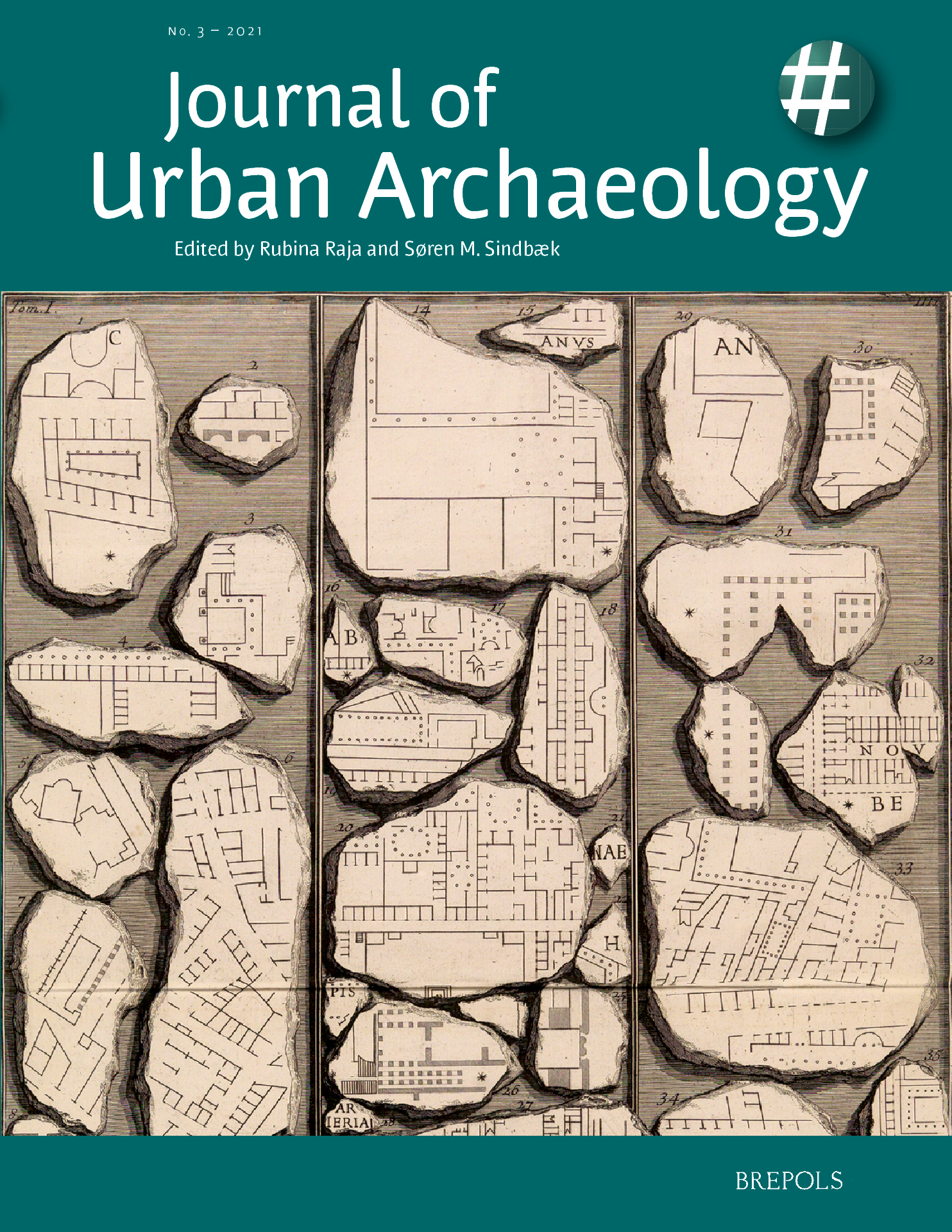Journal of Urban Archaeology 3 has been published
The third issue of JUA can now be found online, published Open Access. It is a special issue focused on two of UrbNet’s core conceptual agendas: network evolutions and high-definition narratives. Research areas, within which UrbNet is a world-leading research centre.

Nine contributions by scholars working on past urbanism as well as an editorial by the journal editors, UrbNet’s centre director, Rubina Raja, and deputy director, Søren M. Sindbæk, explore urban networks through the lens of network developments and high-definition archaeology.
“This issue of the Journal of Urban Archaeology aims to explore how interpretational frameworks and scientific techniques focused on networks can be integrated with contextual archaeological and historical approaches to form high-definition narratives of urban dynamics in the past.” (Raja & Sindbæk 2021, JUA 3, p. 11).
You can find it online at the online platform of Brepols Publishers.
Do not forget to check out The Backfill – the closing section of the journal. The Backfill is a publication venue for alternative archaeological news and ponderings.
For more information about JUA, visit the journal’s webpage. You will also find information about how to submit for future volumes of the journal.
Network evolutions and high-definition narratives
‘Network Evolutions’ was the title of UrbNet’s second agenda conference held in January 2017. Later the same year, in November 2017, the third agenda conference ‘High-Definition Narratives’ took place.
The conferences brought together scholars exploring how new forms of data can be harnessed to test, challenge and revise narratives of particular urban sites and fundamental assumptions about trajectories, dynamics and causal conditions of urbanisation in the pre-modern past. The conferences have now resulted – after JUA’s double-blind peer-review process – in the publication of this special issue.
Contributions in JUA, volume 3
- Rubina Raja and Søren M. Sindbæk: Network Evolutions and High-Definition Narratives — An Introduction
- Kirstine Haase and Neeke M. Hammers: Tracing the Trigger of Social Change in the Medieval Town through Imported Food, Objects, and their Biographies
- Scott Hawken and Roland Fletcher: A Long-Term Archaeological Reappraisal of Low-Density Urbanism:Implications for Contemporary Cities
- Heinrich Härke and Irina Arzhantseva: Interfaces and Crossroads, Contexts and Communications:Early Medieval Towns in the Syr-Darya Delta (Kazakhstan)
- Jan Kindberg Jacobsen, Giovanni Murro, Claudio Parisi Presicce, Rubina Raja, Sine Grove Saxkjær, and Massimo Vitti: High-Definition Urban Narratives from Central Rome: Virtual Reconstructions of the Past and the New Caesar’s Forum Excavations
- Pierre-Yves Manguin: Srivijaya: Trade and Connectivity in the Pre-modern Malay World
- Elizabeth A. Murphy and Jeroen Poblome: Intramuros: Investigating Relations between Cross-Industry Practices and Networks through Sixth-Century AD Sagalassos
- Martin Pitts: Towards Romanization 2.0: High-Definition Narratives in the Roman North-West
- Eivind Heldaas Seland: Associations and Interactions in Urban Networks of the Roman Near East
- Peter J. Taylor: Incorporating Geographical Imagination into Early Urban Demographic Estimates
